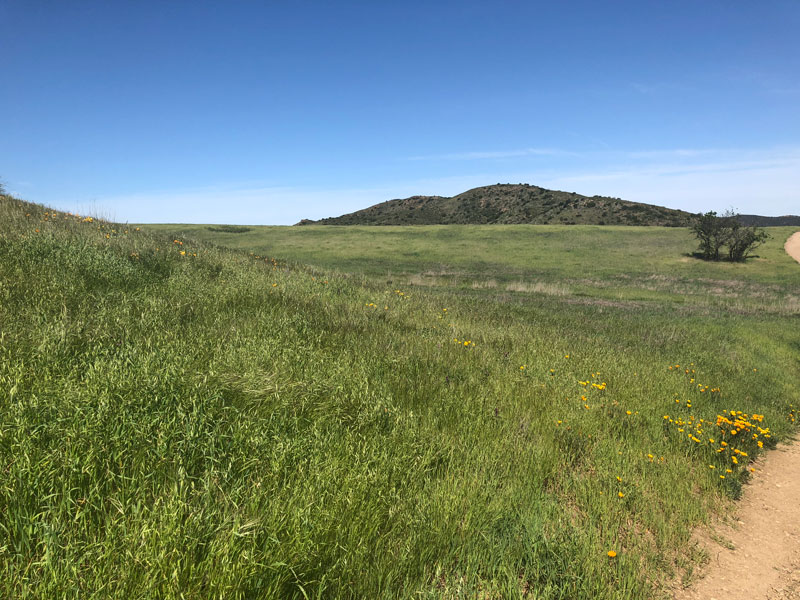- Mongabay’s Director of Partnerships shares what inspired his love of nature.
- The Santa Monica Mountains, just north of Los Angeles, was the scene of Martin’s childhood search for snakes, lizards, skinks, salamanders, newts, frogs and turtles. Oh, and tarantulas and scorpions.
- This post is insider content, which is available to paying subscribers.
I grew up in Southern California, just north of Los Angeles, and spent time in nature consistently throughout my childhood. I credit the under-the-radar natural wonderland of Southern California, as well my parents’ love of nature, thoughtfully instilled into me during hikes, camping and beach trips, as the foundational inspiration seeding my career as an environmental fundraiser.
Contrary to popular belief, Southern California isn’t just suburban sprawl. Fragmented pockets of “wild” area do exist and are fairly plentiful, scattered among or within cityscapes from Los Angeles to San Diego, and I was fortunate enough to live right next to the northwestern edge of the Santa Monica Mountains during my formative years. I explored nature with my family and friends alike, and spent the majority of my time out there; and when I wasn’t in it, I daydreamed that I was.

All of this spectacular beauty lies just north of one of the United States’ most populated cities, Los Angeles. The mountains rise abruptly off the coast up to elevations exceeding 900 meters (3,000 feet). It’s defined start to finish by beautiful and unique landscapes, from sandy beaches and coastal tide pools, to steep canyons and one-of-a-kind habitats ranging from oak forests and chaparral to iconic valley oak savannas. A fun side note to broaden our perspective a bit: it was only about 10,000 years ago that giant sloths, saber-toothed tigers and other now-extinct but super cool species roamed these very same lands. As a kid, I sometimes searched for them, and while I never did encounter that woolly mammoth, I did find some amazing critters, including some fantastic reptiles, which were by leaps and bounds my favorite.


The climate is dry and sunny the majority of the year, and people young and old flock toward their local “neck of the woods” to enjoy nature. After a brief rainy season from November to March, the mountains explode with life, turn green and sprout an abundance of wild flowers; rodents replicate like there’s no tomorrow; hawks, snakes, bobcats and mountain lions then feast, and this whole process tangibly feels like life is restored for another year. At this moment every Southern Californian breathes a collective sigh of relief. Except perhaps for our resident cottontail rabbits, who always look a little nervous to me as the hawks fly over and the coyotes, bobcats and mountain lions lurk in the tall grass and chaparral. It’s a true wonder to witness life explode on all cylinders for those few green months before the hot summer days settle in. Those two to four months of actual green grass are pure heaven. The rest of the year? Mostly brownish yellow.

As a kid, I spent the grand majority of my days exploring the network of trails that meander through the rugged canyons and hillsides, most of the time with my dad, and as it turned out I became a capable explorer in my own right. I mostly wanted to search for snakes, lizards, skinks, salamanders, newts, frogs and turtles. Oh, and tarantulas and scorpions. Basically anything that would make my poor babysitter scream!

As time went on, I honed my “hunting” skills and would catch (and release) as many lizards and snakes as I could. Western fence lizard? No problem. Gopher snake? A pure joy! Southern Pacific rattlesnake? Once … but don’t tell my mom. To this day I still feel a strong bond to the slithery, slimy and creepy-crawliest of wildlife that call this special place home. I’ll be the first to admit that the possibility of viewing them in their natural habitat is still the primary reason why I still frequent my old stomping grounds. I feel a true sense of exhilaration when I stumble across a friendly reptile on the trail.


When people think about Los Angeles, they think of Hollywood, shiny things, probably traffic, and hopefully not my poor fledgling Lakers. For me, I smell sage brush on a foggy morning, feel the cool shade under a grand old oak tree on a dry August day, taste the salty ocean air creeping up through the canyons, and see a natural wonderland that we must all chip in our very most to protect and secure for future generations.
I’ve been fortunate to travel to and even live in some really nature-rich places in the U.S. and internationally, but I still remain connected to this little place just north of Los Angeles, as are many locals, who escape into the mountains or straight to the beach to let go of their daily stresses as they reconnect with nature.

